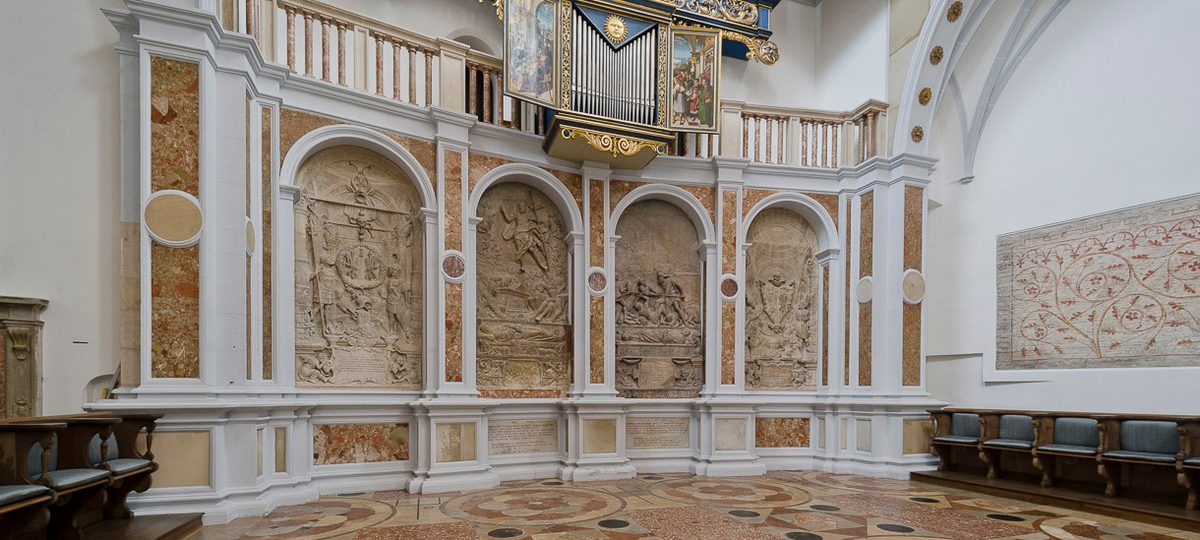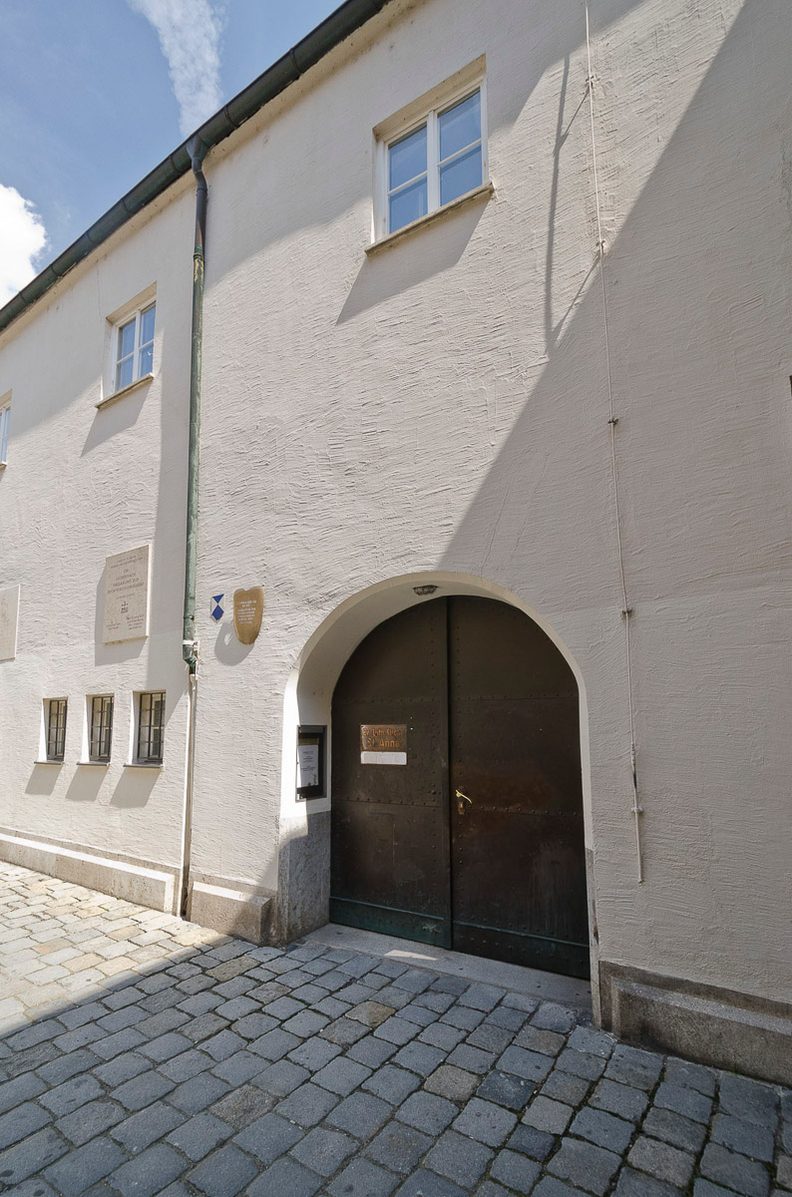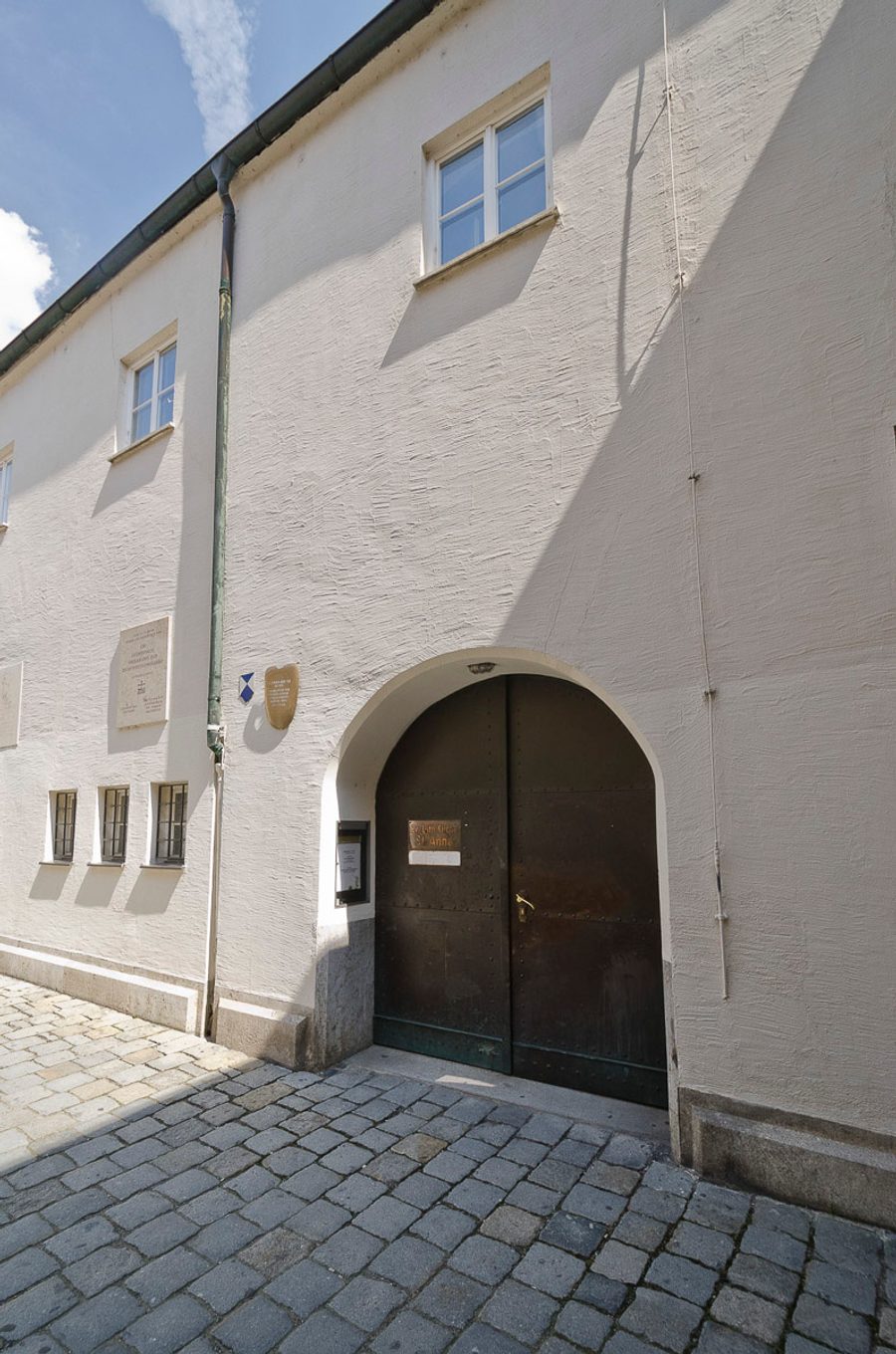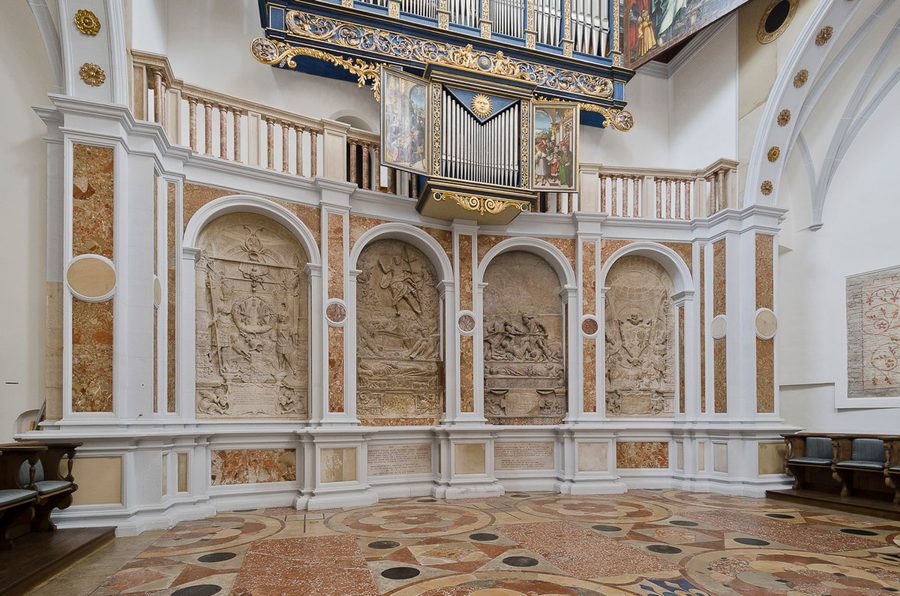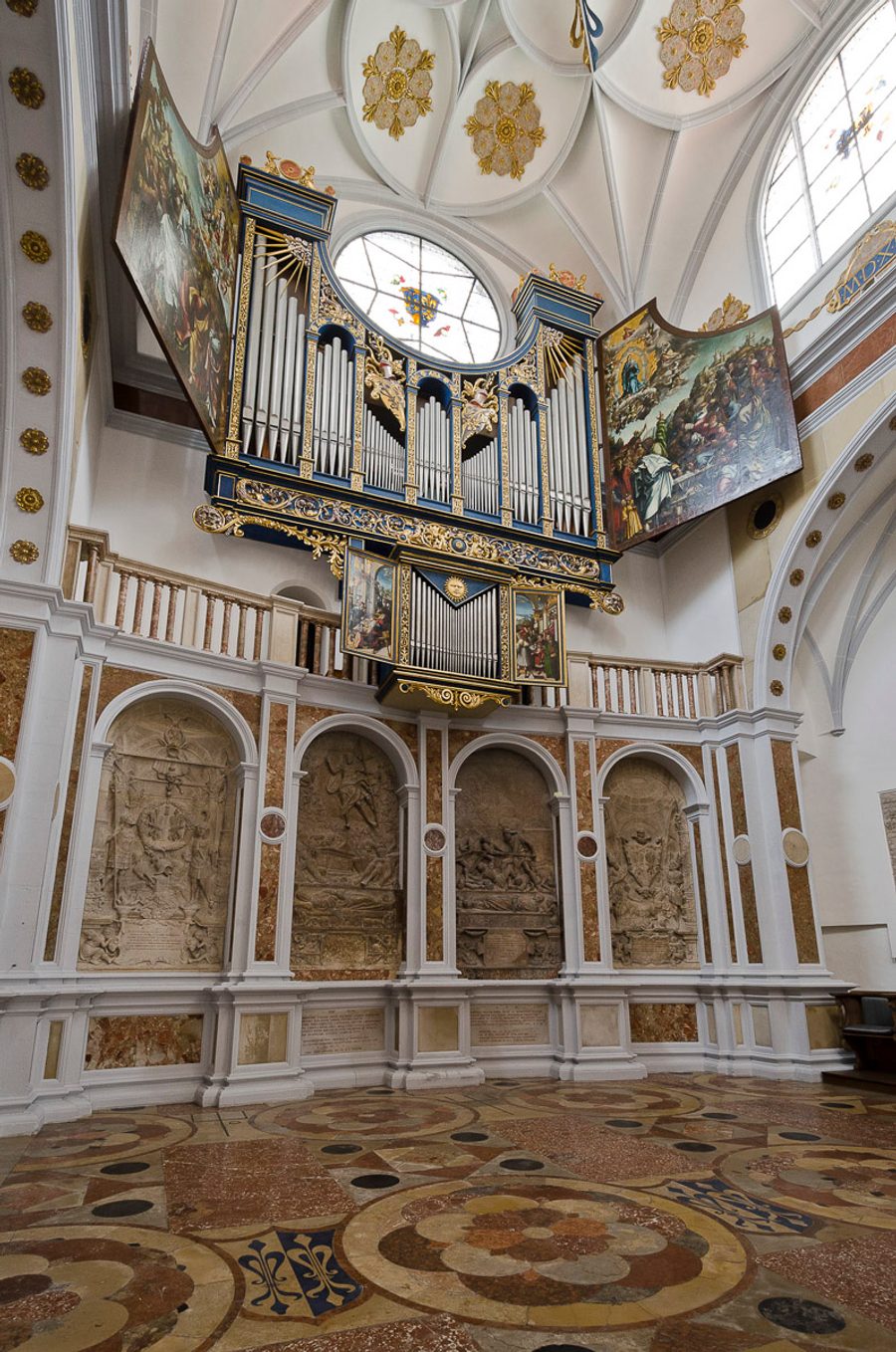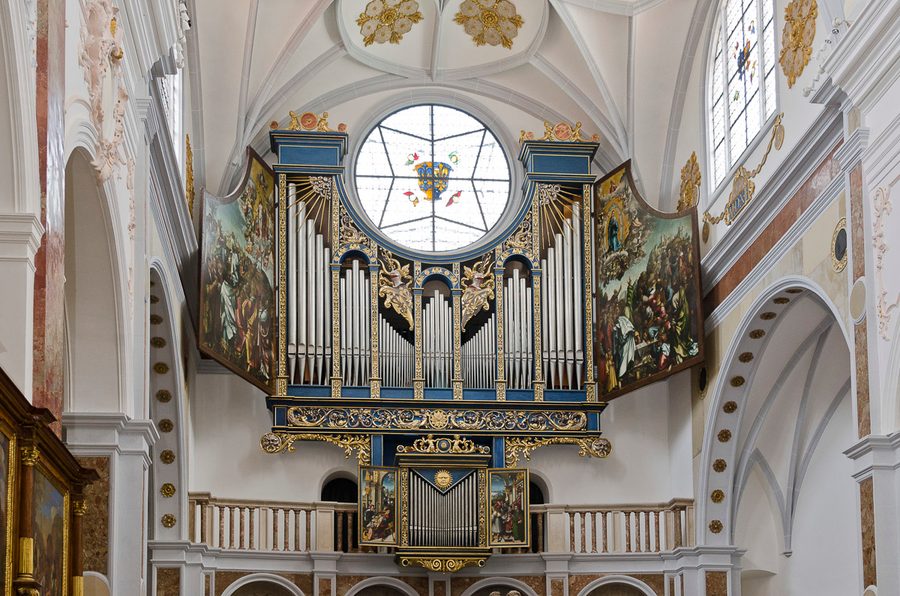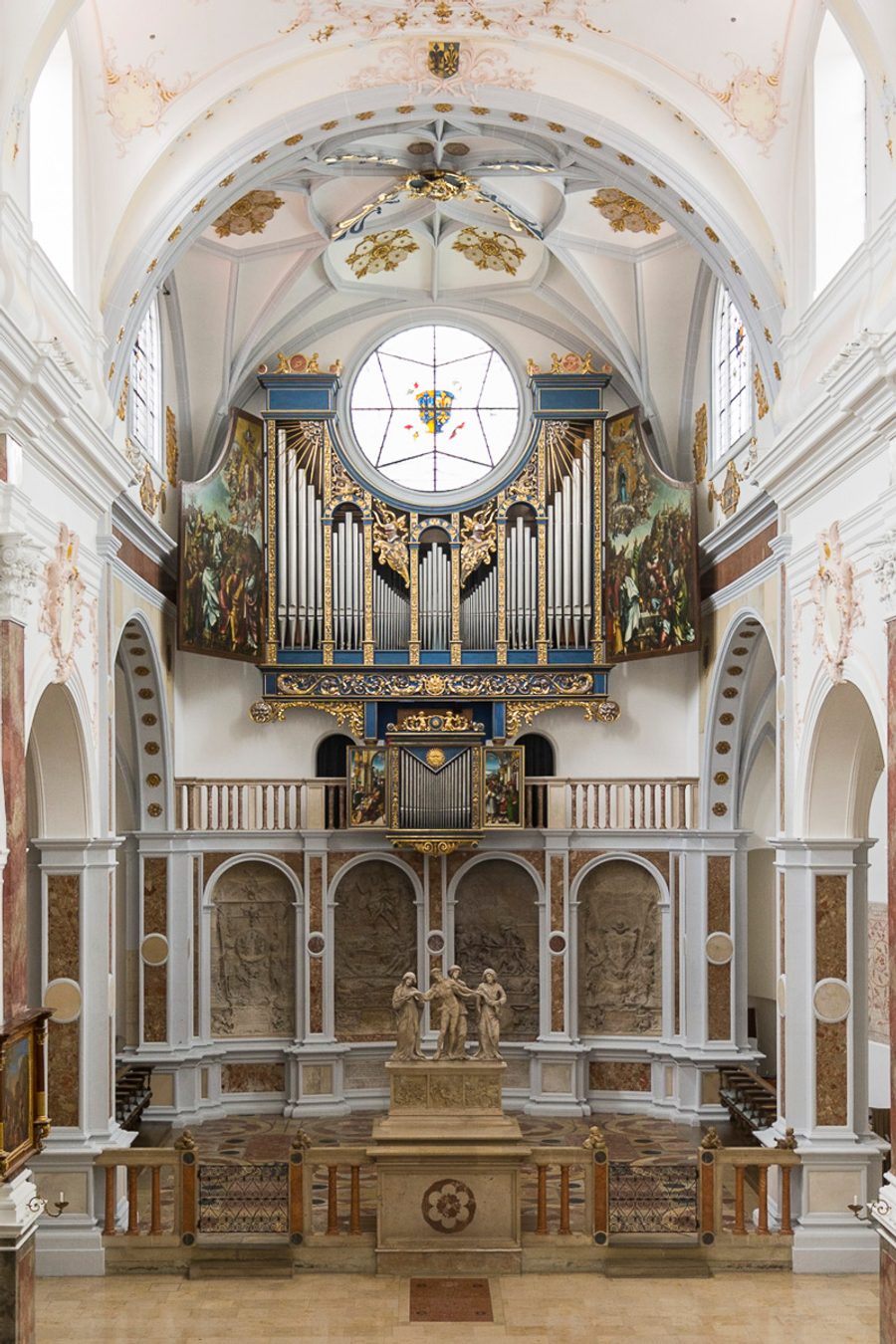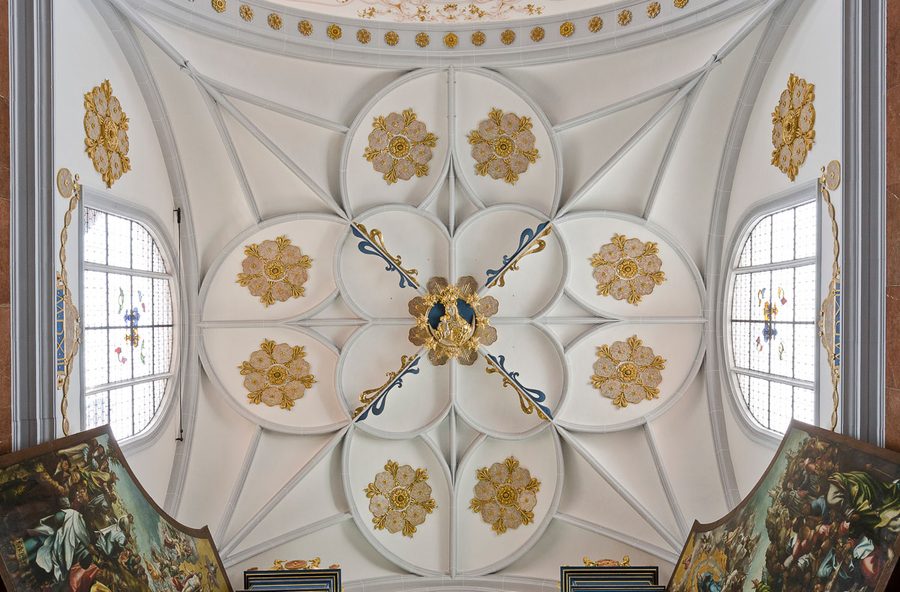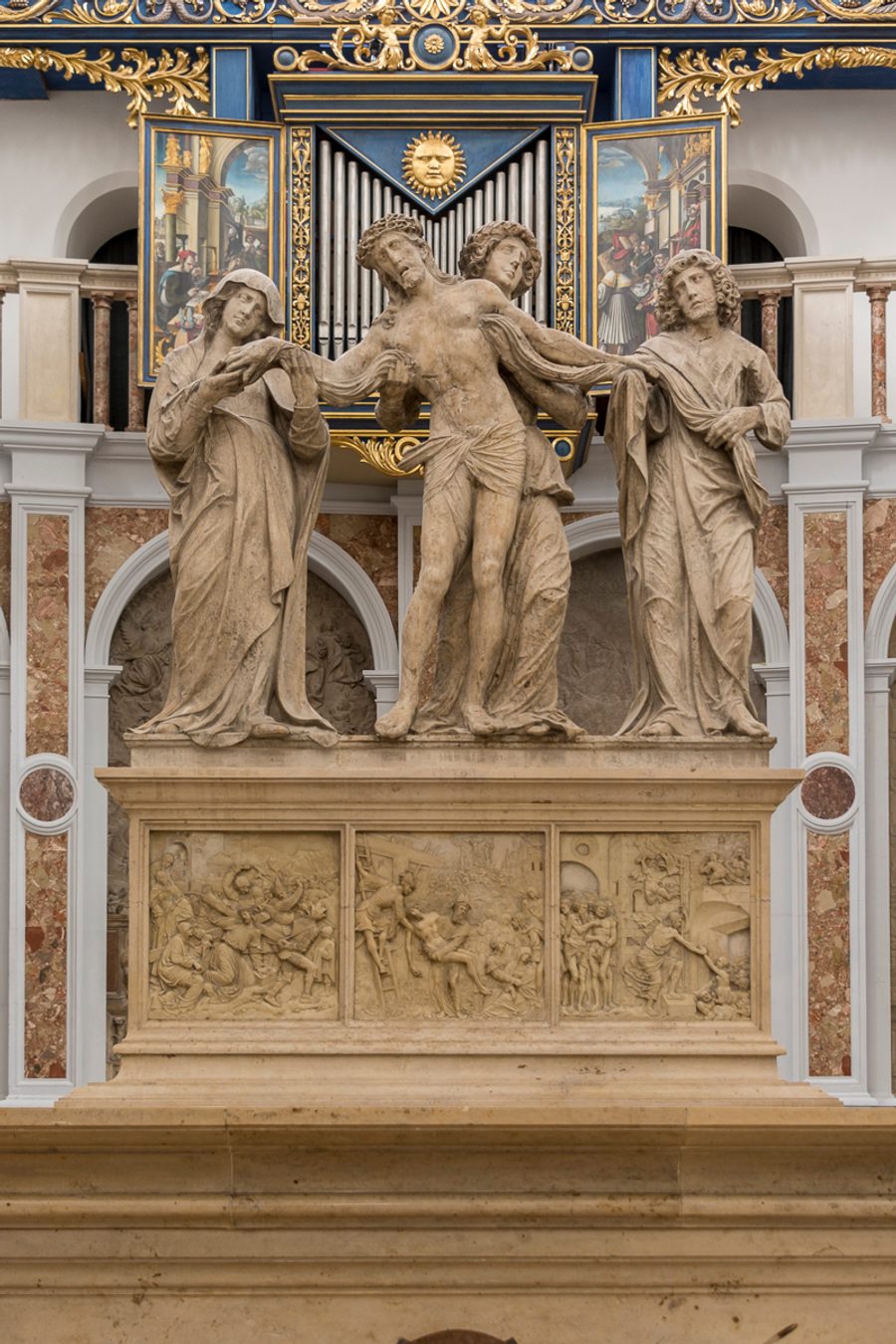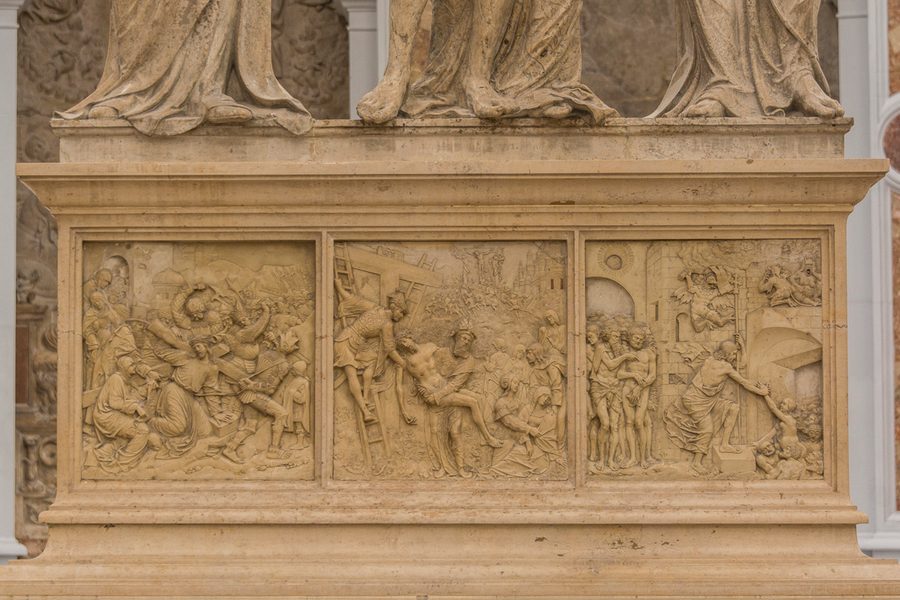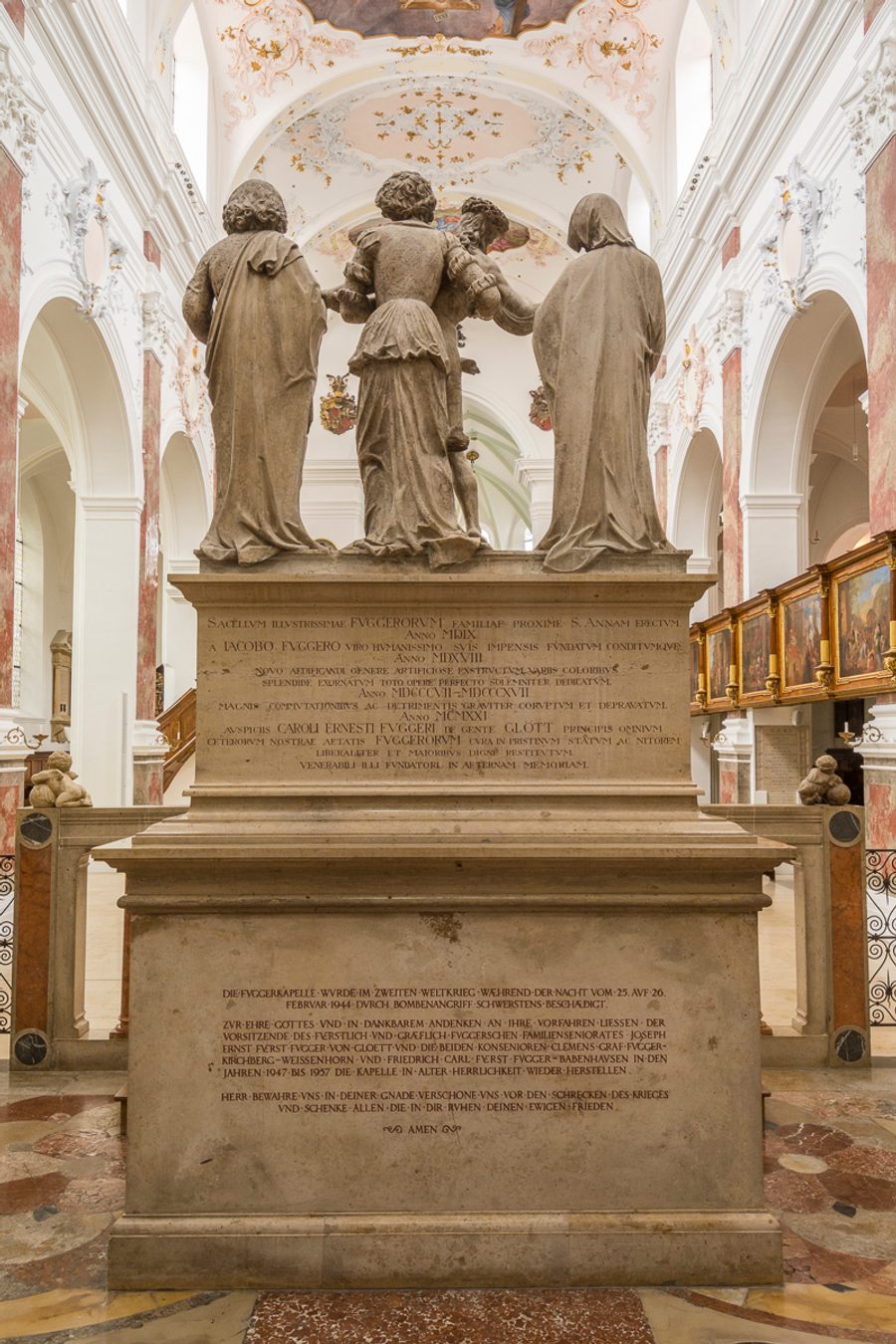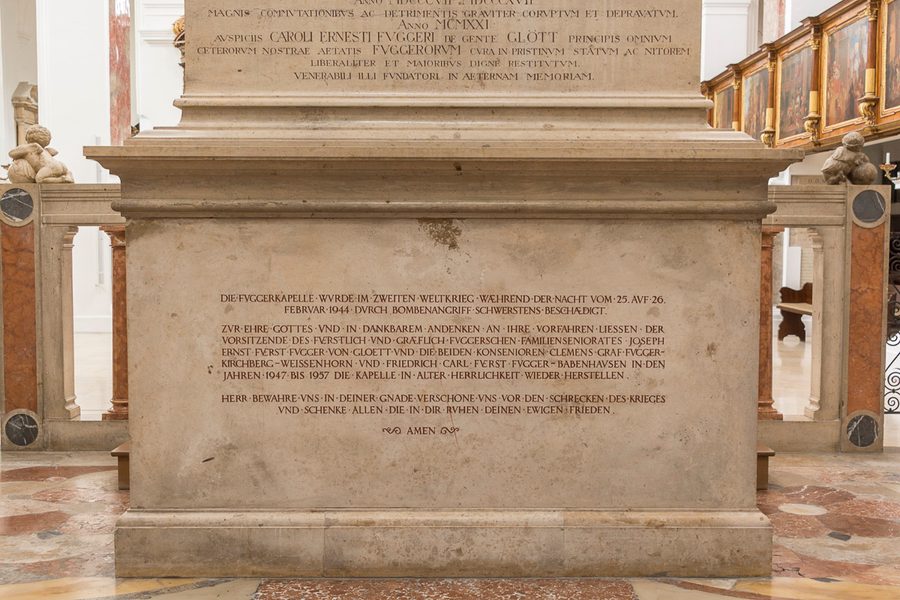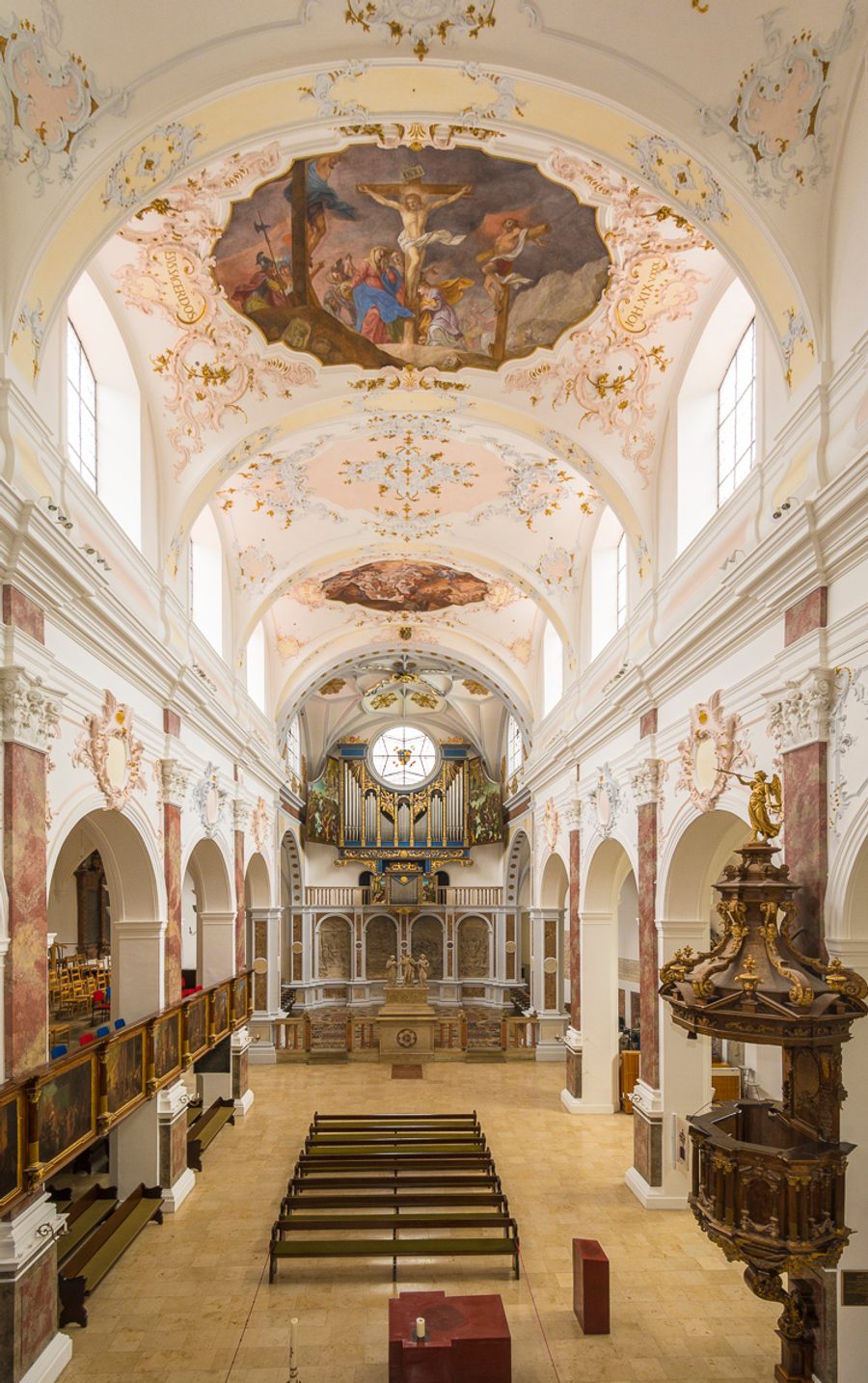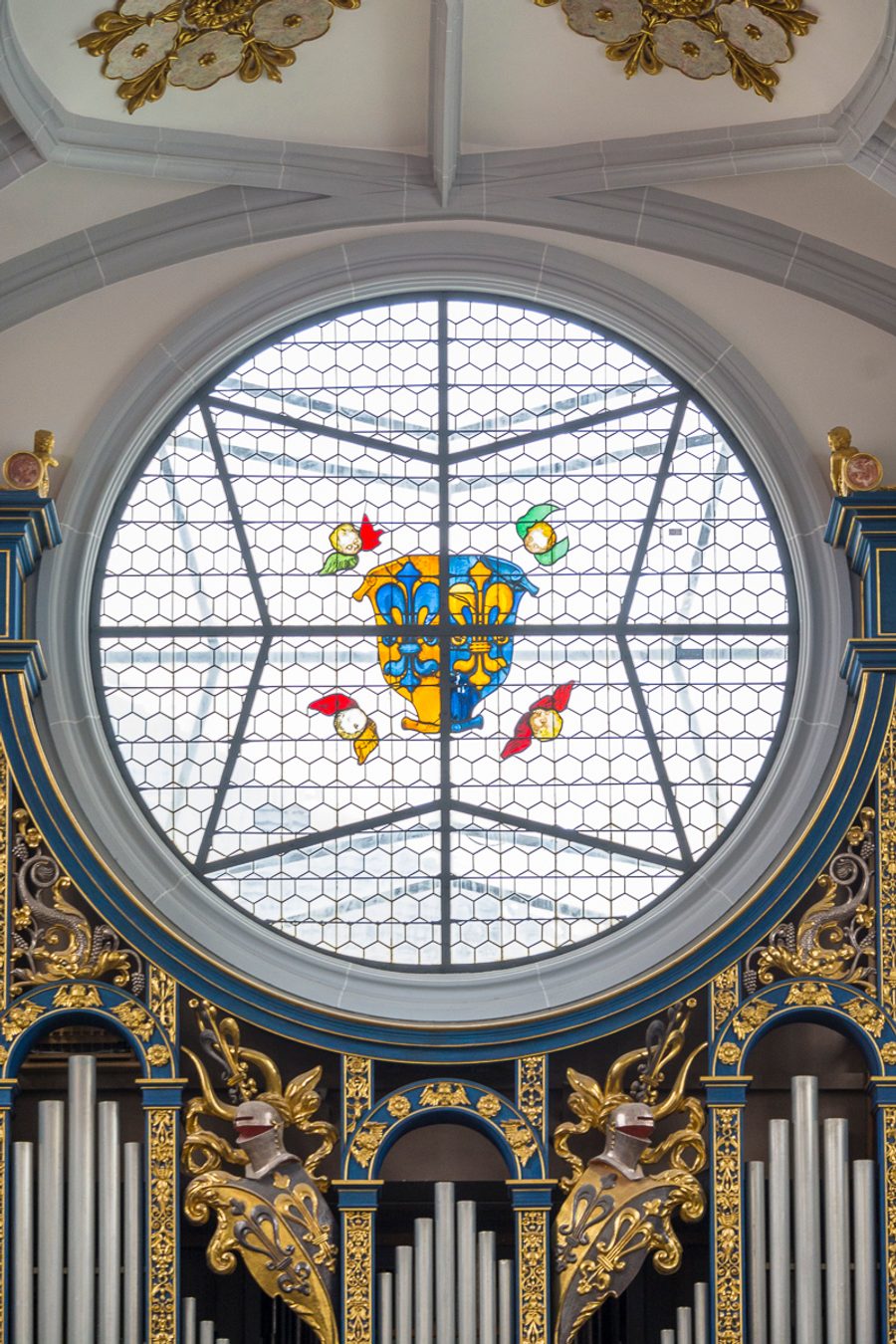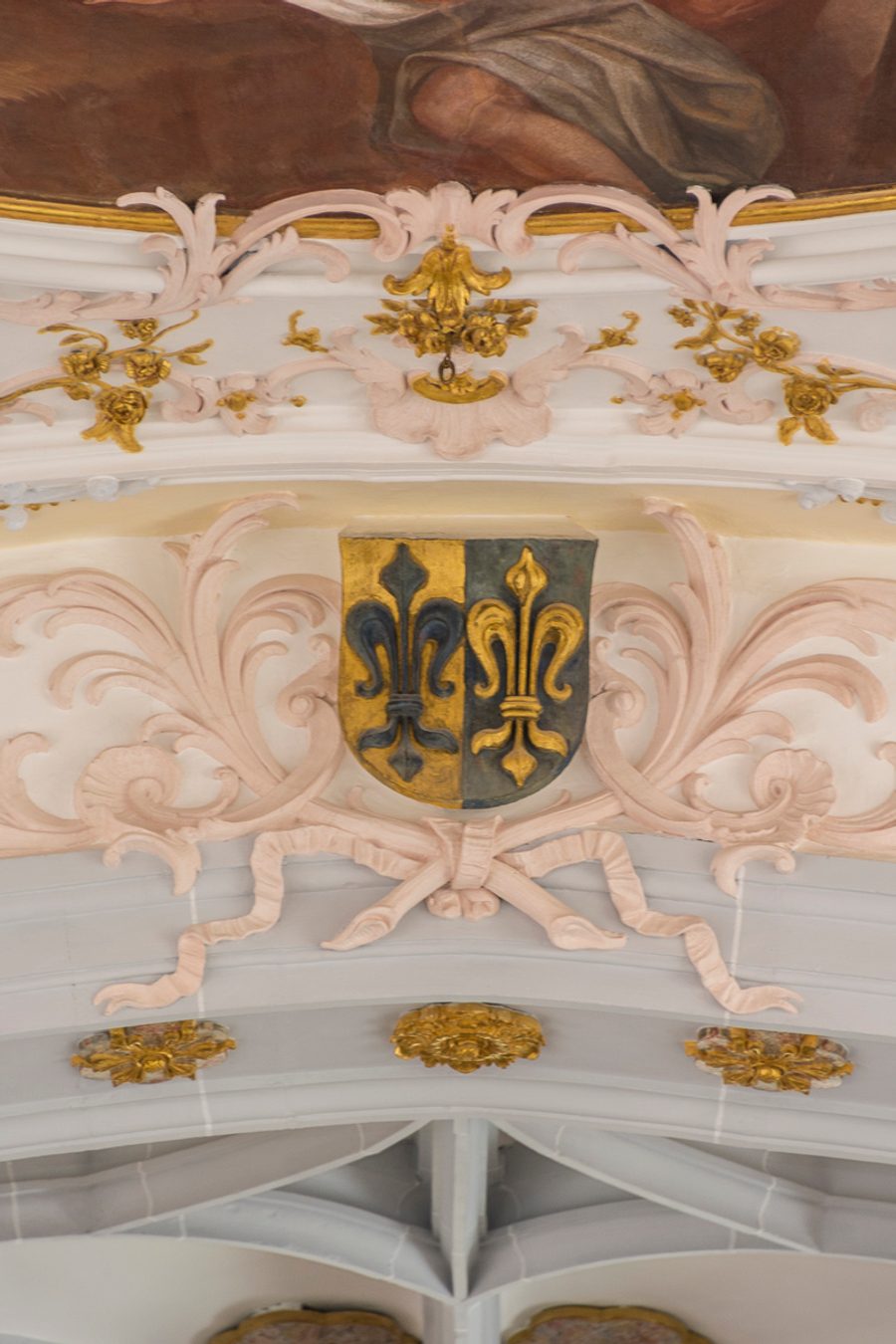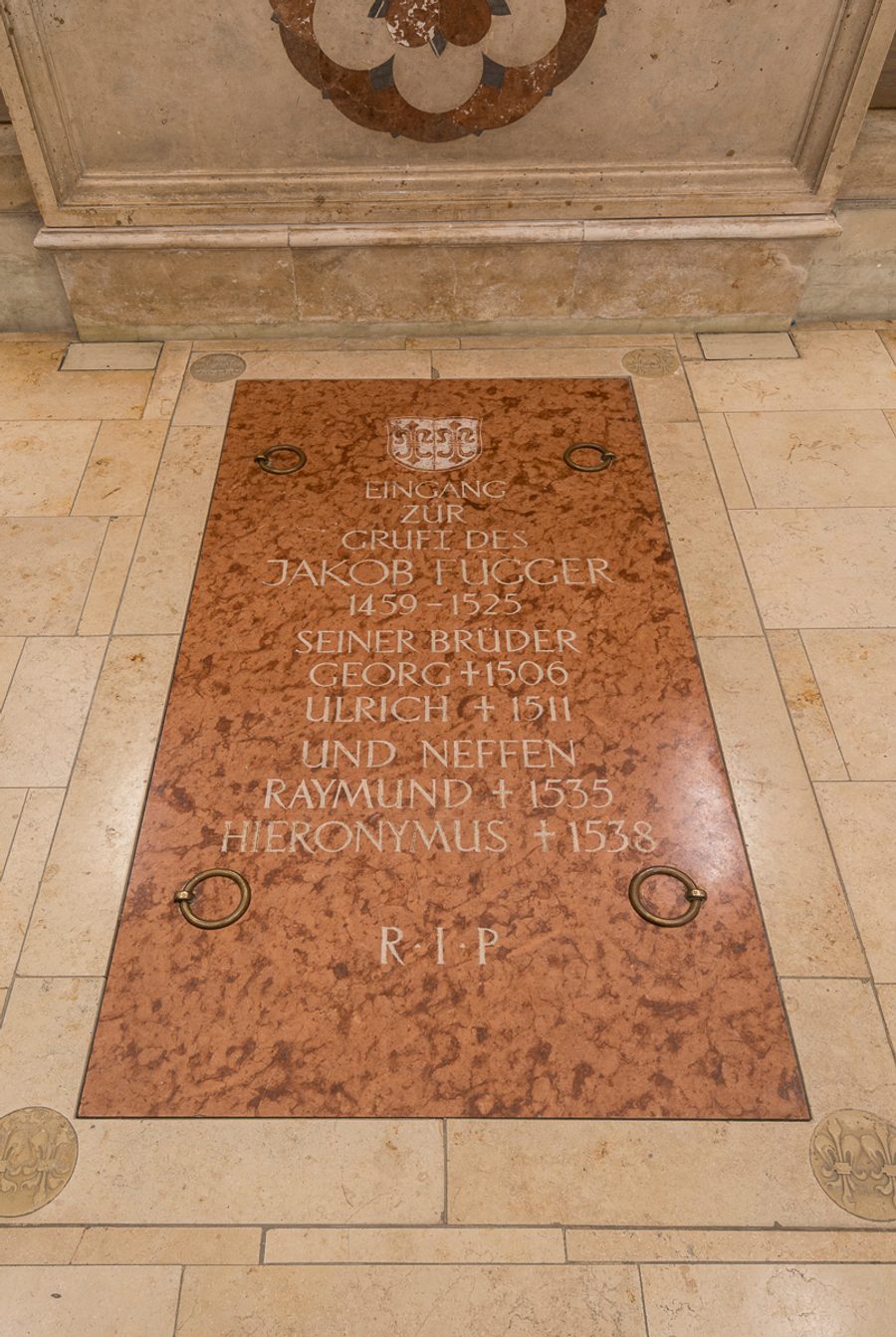The brothers Jakob and Ulrich Fugger concluded an agreement in 1509 with the Carmelite Convent for the construction of a chapel in what is now St. Anna Church. The male members of the family were to have their final rest in a tomb there. In 1521, Jakob Fugger established the chapel as a permanent charitable foundation in his own and his deceased brothers' names. After the brothers Georg, Ulrich and Jakob Fugger, only Jakob's nephews Raymund and Hieronymus were interred in the chapel. After St. Anna became Protestant, Fugger burials took place at remaining Catholic churches in Augsburg and at Fugger estates.
The Fugger Chapel as part of the foundations
The three independent foundations, the Fugger Chapel, the Fuggerei, and the sermon endowment at St. Moritz were established in the 1521 deed of foundation. Financially, the burial site at St. Anna was the most extensively endowed foundation. Jakob Fugger dedicated 15,000 florins to the foundation, which was a very substantial sum in his times. Current research names multiple motives for the large investment: On the one hand, Jakob Fugger was making a contribution to his family's salvation; on the other, the chapel was meant to be a sign of the economic strength and creditworthiness of the firm and of the social standing of the family.
Gesamtkunstwerk of the early Renaissance
The Fugger chapel in St. Anna is known as the first sacred Renaissance structure in Germany. Excellent artists were engaged for its design. The free-standing altar group depicts the Lamentation of Christ and was sculpted by Hans Daucher; the paintings on the organ wings were done by Jörg Breu the Elder. The epitaphs for the brothers Georg and Ulrich are also of art-historical interest: They were made based on designs by Albrecht Dürer.
